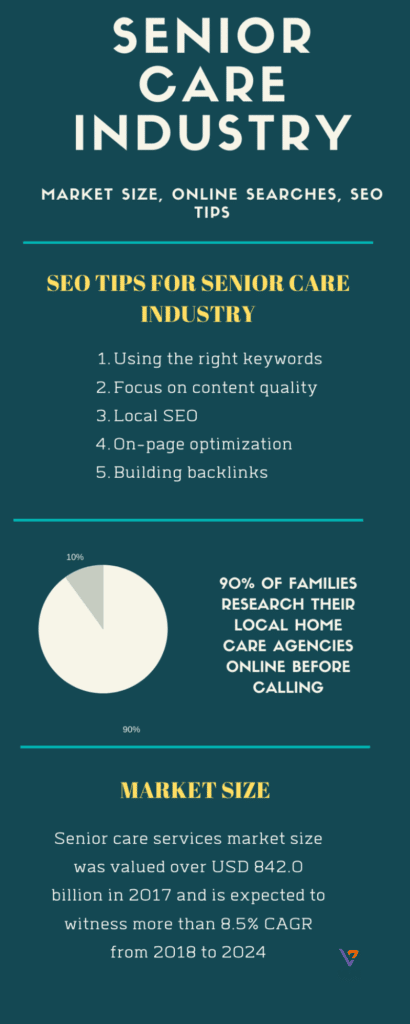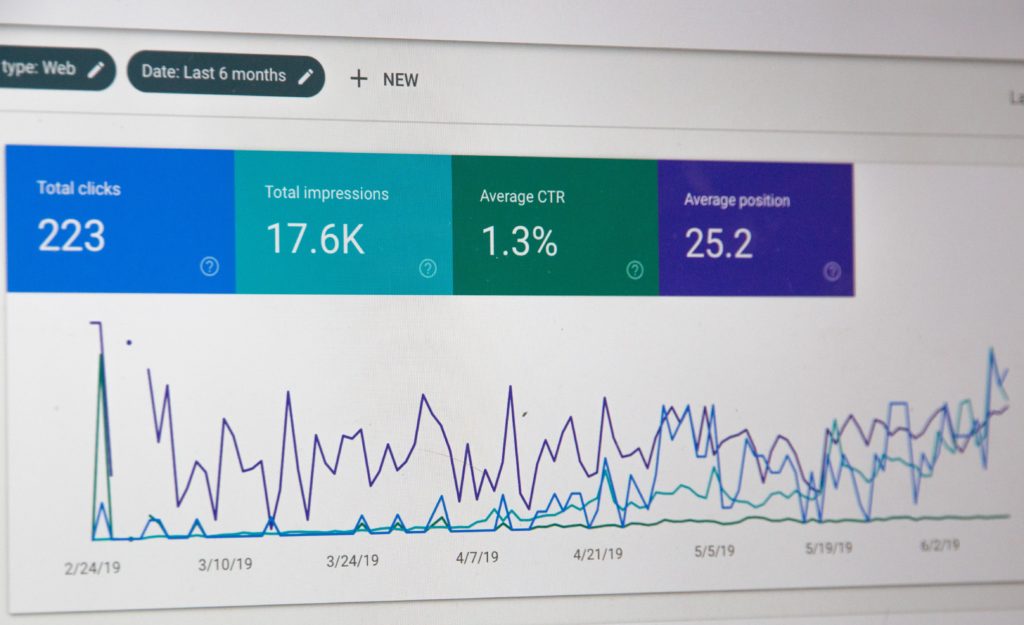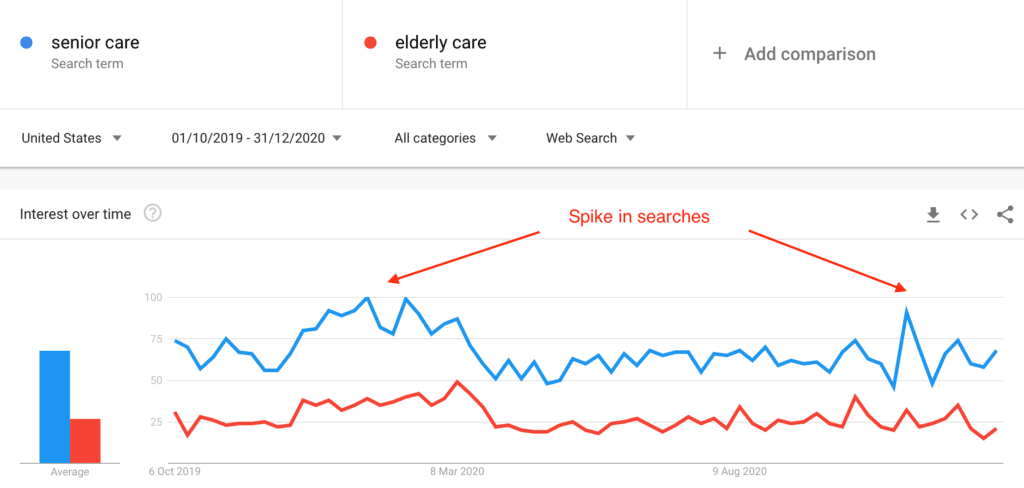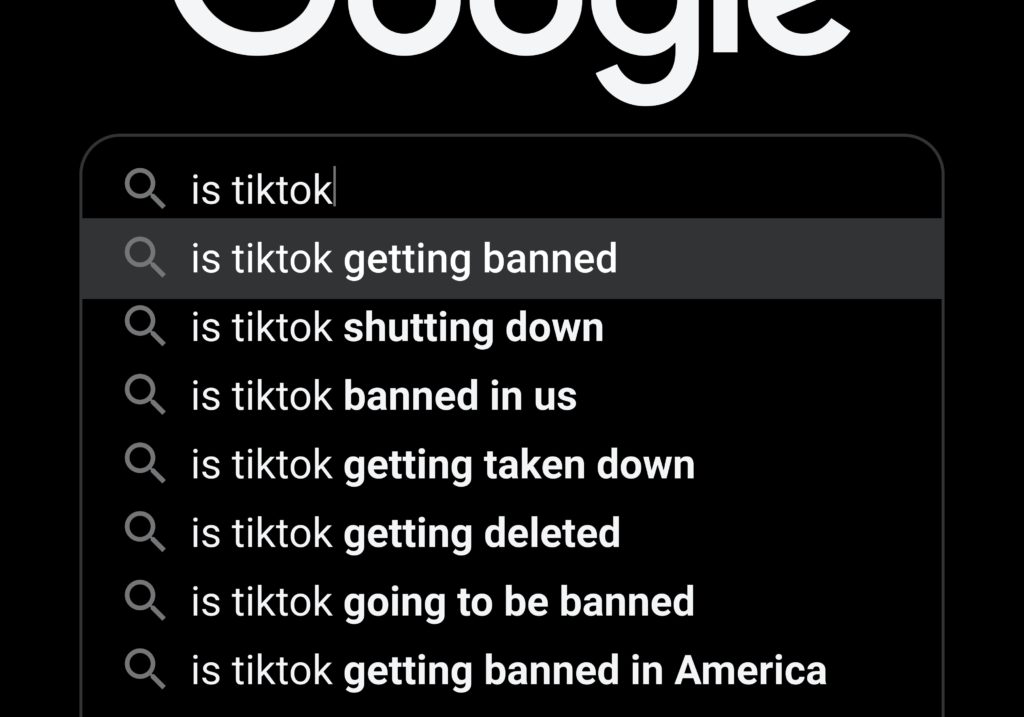Content Marketing Tips For Senior Care Companies
With the increase in the number of internet users, content marketing has started gaining popularity. Businesses and brands have started creating content and publishing on various digital platforms like their websites, Facebook, Instagram, YouTube, Twitter, etc.
With numerous digital channels out there, it can be a bit confusing to figure out which channels you should use for content marketing. This is when the importance of content marketing strategy comes into play. Having a strategy will provide you a roadmap on tasks you need to complete.
As a senior care business, your content marketing strategy can vary. In this post, we share some amazing content marketing tips for senior care companies:
1. Blogging

Blogging is one of the best and most cost-effective content marketing methods. Blogging won’t just help you provide useful information to your audience; it will give improved search rankings as well. Through blogging, you can drive organic traffic to your website. It is a great way to provide useful and valuable information to your audience. When you provide helpful information to your blog visitors, it will help you build your brand and the trust factor.
2. Video marketing
Video marketing is another fantastic way to promote your senior care community. As compared to other content formats like articles, eBooks, images, etc., videos are a lot more powerful. Video content is powerful due to one primary reason – it is audio-visual. With the decrease in the attention span of users, it can be a bit difficult to sustain attention with other content formats. Through video content, you can interact and engage with your audience in a better way, and share it on all your social media channels. This helps build trust and credibility with current and future clients.
3. Post reviews on your website
Another great content marketing tactic is posting reviews on the website. When finding the best senior care facility, adult children and prospective residents first look for reviews. Apart from posting reviews on Google My Business, Bing, and other online listings, posting reviews on your website will add authenticity to your community. Online reviews can play a significant role in getting more traction for your senior care company.
4. Virtual tours

Through virtual tours, you can make your senior living content marketing interactive. With a virtual tour, you will be keeping your prospects engaged with your website and also providing them a walkthrough of your community. For the prospects who can’t visit your community in-person, a virtual tour of your community can be really helpful.
5. Offer freebies
Rather than focusing on promoting your facility, your focus needs to be on building the trust factor. You can do that by offering something valuable for absolutely free. Freebies can enhance your content marketing strategy. Your question could be, what freebies can you offer? Well, you can create and offer eBooks, guides, tutorials, checklists, and more on how to help seniors in need (dealing with dementia, Alzheimer’s, MS, etc). In short, it needs to be something that really adds value to your audience’s life.
6. Leverage social media
If your content marketing strategy is not giving much attention to various social media platforms, you are missing out on a lot. Different social media platforms have a massive audience base and audiences with different demographics. Some social media platforms you can consider for your senior care company are Facebook, YouTube, Twitter, and LinkedIn. These platforms have your target audience. Therefore, consistently publishing high-quality content on these platforms would help you get the best out of your content marketing strategy.
7. Email marketing

Do you want to connect and interact with users that have left your website? It is possible through email marketing. Email marketing is not just about sending out commercial emails to the users and converting them into sales. It is an online marketing method that can help you reach and connect with your target audience in a personalized way. The process starts with collecting emails. There are various methods you can use for collecting emails. You can run Facebook ads, offer a captivating lead magnet (see “freebie” above), reach out to people one on one, etc. Once you have the email list, you need to create the email content. Using good email marketing software, you can automate the task.
Final Thoughts
We are moving away from traditional advertising for senior care agencies and more into an online world overall. Content marketing is an essential part of digital marketing. No matter what digital channel you use for content marketing, the crucial thing you need to be focusing on is creating and publishing high-quality content, consistently, for your current and future clients. Referrals and word-of-mouth leads will only increase with quality and useful content!
Tags
SEO Tips For The In-Home Senior Care Industry
Are you facing difficulty getting improved rankings for your senior home care industry website? If yes, keep reading. The senior care industry is comprised of skilled nursing facilities, social services agencies, and assisted living facilities, so competition is strong and you need to find a way to stand out.
SEO or search engine optimization is a crucial part of digital marketing. Depending on your niche and the keywords you want to target, the time it will take for SEO to work may differ. Another thing that creates an impact is your SEO strategy. Implementing the right strategy will ensure the best results.

SEO for In-Home Senior Care
With more seniors using the internet and searching for queries on the web, leveraging SEO for elder care service websites can be really helpful and boost your website up to the top of the search engines. Here are some home care SEO tips you should focus on:
Use the right keywords
One of the essential things to keep in mind while doing SEO for your website is focusing on the right keywords. Keywords can create a significant impact on the success or failure of your SEO campaign. When getting started with an SEO campaign, it is vital to target the right keywords. Doing it incorrectly can result in your website ranking for the wrong keywords, which could ultimately mean your website will get visitors with low intent. To make sure whatever keywords you target are right, you need to make use of different keyword research tools. Some of the best keyword research tools are Ahrefs, Semrush, and Moz.
Focus on content quality

Once you have decided what keywords you want to target, the next step is to develop a content strategy. When it comes to search engine optimization, one thing you should not ever compromise on is quality content. Not paying proper attention to content quality means you will have a hard time getting higher rankings on giant search engines like Google, Bing, Yahoo, etc. Over time, Google introduces many algorithmic updates, and these updates are executed to improve users’ experience by providing them with high-quality and relevant content. Make sure your content strategy is focused on different content formats like text, video, audio, and images, and is always up-to-date and relevant.
Local SEO
Local SEO is an essential part of SEO, and especially for the senior care industry. It will provide increased visibility to your live-in care website. Do you know that as many as 46% of all Google searches are local? Hence, not focusing on local SEO means you will be missing out on a lot of business. Apart from ranking your website page on Google, what’s more important is getting higher local search rankings. We all know that Google is the largest search engine in the world, and the company has made local SEO easier with its Google My Business (GMB) platform. Luckily, listing your local business on this platform is super easy! With a GMB listing and proper local SEO, whenever someone searches for assisted living for the elderly or a similar query, Google will show your business on maps right away.
On-page optimization
On-page optimization is another critical part of SEO. With poor on-site or on-page SEO, search engines will have difficulty understanding what your website and its content is all about. There are various on-page factors you need to take into account, which includes the page title, meta description, header tags, content optimization, and more. When you want to only rank for low competition keywords, on-page optimization would be enough. You then may not require the need for off-page optimization.
Backlinks
Backlinks are links from other people’s websites to your website. When you add another website’s link on your website, you provide a backlink to that website. Many marketers focus their most attention on creating more and more backlinks. In reality, it is essential to focus on quality and not quantity. Your website might have tons of backlinks, but if they are not from an authoritative website, it’s not worth it. Also, low-quality backlinks can ruin your SEO campaign. Hence, after on-page optimization, the next thing you need to focus on is building backlinks from authority (high-quality traffic) and relevant websites.

Final Thoughts
SEO experts say that there are over 200 factors that determine the ranking of the website. Focusing on all of them is almost impossible. However, you can focus on factors that create the most impact for your business on search rankings.
Have questions about SEO for your website? We’re here to help. Reach out below!
Tags
How To Flawlessly Set Up Your Website’s Mobile Experience
In 2020, 50% of web traffic comes from mobile, and almost 80% of Facebook users are on mobile. Those numbers will likely continue to increase, and it can be debated that mobile is more important than desktop, so it’s absolutely crucial your website is completely mobile-friendly.

Your Website Experience
Here are a few questions you need to ask yourself (or fix ASAP):
- How easily can users interact with your site?
- Is it too hard to exit out of pop-ups?
- Is everything spaced on one screen without having to move left or right?
- Is the text big enough to read on a small screen?
- Is there too much text? (mobile users are faster than desktop users and don’t want to read a book)
- Is the information you want them to know available right away?
- How fast does your mobile site load?
Even though we put an emphasis on your mobile site speed last in the list, it’s likely one of the most important aspects. 53% of mobile users leave a site that takes longer than 3 seconds to load, which means you could lose out on a lot of conversions. We recommend checking your mobile (and desktop) speed using the Page Speed Insight or the GTmetrix and following the suggestions they provide.

Testing Your Website
Too many websites have neglected their mobile aspect, and it’s no surprise why. If you are responsible for building your own website without hiring a developer, it’s likely you’ve done everything on your desktop. And we’re sure it looks great on desktop, while your mobile experience likely looks totally different.
One simply way to actually see what your site looks like on multiple devices is to simply right click -> inspect -> and change from responsive to other devices on the top left.
Google has a fantastic free report which can help you test your mobile-friendliness today. You’ll receive nice recommendations for you to implement changes or send to your developer.

A Mobile-First Site
If you know your audience is mostly on mobile, you should consider building a mobile-first site.
Mobile-first sites are built with mobile users in mind, and then desktop and tablet users. They are fast loading, include easy navigation and less text than desktop.
This guide by Search Engine Journal can help you to set up a seamless and successful mobile-first site.
Still have some questions about mobile friendly sites? Get in touch below!
Tags
6 Advertising Changes For The Senior Care Industry (In A Post Covid World)
In 2020 the senior care industry was hit hard worldwide by the Coronavirus. Many companies had to find ways to adjust their routines to accommodate the daily unknown.
Ad campaigns began to show different results than they had in the past, and many companies were dealing with volatile cost-per-clicks and even more volatile clicks in general. Competitors began to amp advertising dollars to make up for lost revenue and prepare for the unknown.
With the Coronavirus still plaguing our world today, uncertainty still exists and the world of senior care will change as we continue to care for the elderly.
A new era of “stay at home” orders and “socially distanced” norms will mean your advertising should look different than it used to.
Below are 6 changes you should make to your advertising if you haven’t already:
1. Website Changes
If you don’t already, you absolutely need to update your website to include detailed information about the coronavirus and what you are doing as a company to stop the spread and keep everyone safe.
To stay ahead of your competitors, it’s important to include information on your website to answer any common problems seniors may be facing. Be the one to help with loneliness during this time, or how to help family members of loved ones stay safe and nurtured through self-isolation.

2. Search Queries & Trends
Undoubtedly, our searches in 2020 weren’t necessarily “normal”. Our searches included Coronavirus and COVID and how to stay safe every day. A large number of searches included how to keep seniors safe, either in their own homes or in the care homes they may have been in.
Google Trends showed an increase of more than 25% in “elderly” and “senior care” searches alone over the past few years. Knowing this could mean increasing your bids for these terms, or making sure you have the most compelling ad copy when you show up on these searches. Use Google Trends to discover new searches and predict upcoming ones moving forward.

3. Extensions
Update your sitelink and callout ad PPC extension to include your safety information on your website and any actions your making to keep everyone safe!
4. Ad Copy
Your ad copy needs to take into account who’s the one reading the ad. 60% of people only read headlines, which means you need to say the right thing to the right person, right away.
Some ad copy ideas to consider (depending on who you’re speaking to and if you’re looking to help clients or recruit):
- Care In The Safety Of Your Own Home
- Care That Makes A Difference
- Stay Safe At Home
- Home Care For Loved Ones
- Expert Senior Care At Home
Some additional “Power Words” you’ll want to include in your ad copy to grab attention are the following:
- Above and beyond
- Accredited
- Approved
- Authentic
- Authority
- Better
- Best
- Cancel anytime
- Certified
- Dependable
- Expert
- Genuine
- Guaranteed
- Professional
- Protected
- Research-Backed
- Reliable
- Trustworthy
- Verified
- Worry-Free
Be careful with your ads and using sensitive coronavirus words as they may get flagged/rejected (especially on Facebook & Google). This goes for PPC and Image ads.
5. Reviews, Listings & Google My Business
Update your Google My Business to include COVID-19 details and what you’re doing to keep everyone safe. It will also be important to make sure you have your website, business hours, email and phone number up to date so people can easily contact you.
Getting reviews are one of the most important things for senior care companies. You’ll want to politely ask for these as often as you can, and have reviews on Facebook and Google. You can login to your Google My Business account and get a link to a review, which you can easily share by email with your clients.
Make sure your business is on every possible listing website. Yelp, Glassdoor, and Yellowpages to name a few. When a new potential client or potential hire looks for more information on you, you want to give them exactly what they want to see.

6. Recruiting
Your recruitment process might look a little different now. It’s important to keep carers just as safe as seniors, since they’ll be working closely together every day.
Hiring new carers should include zoom video call options instead of in-person interviews.

Be prepared for some of the questions you may get asked:
- How are you keeping me and my family safe?
- Do you have enough PPE?
- Will you tell me right away if I’ve been in contact with someone who has been infected?
- Has pay increased with the higher risk?
- How do I take care of someone who has been infected with the virus?
Having answers for these within your business and during an interview will be paramount to your future success.
Lastly, google ads, social media and indeed sponsored continue to help greatly with applicant flow during this time and moving forward.
Have any additional questions about this? Get in touch with us below!
Tags
Do You Really Know What Your Ideal Customer Wants?
How well do you know your customer?
Do you know their likes, dislikes, how they interact on the internet, and the activities they enjoy doing?
Without getting too invasive into personal privacy, as that’s another extremely important topic, it’s important to know as much as you can about your customer.
Believe it or not, there are plenty of businesses out there that actually don’t know much about their customer, or their ideal customer.
In order for someone to convert on your ad, website, and beyond, customers today aren’t like they used to be. Customers today need to feel like you understand them and their needs. You need to understand their pain points and be the one to solve them.
It’s likely you aren’t the only business offering what it is you offer, so it’s important to stay ahead of the game as much as possible.
If your customer believes that you understand them and have the exact solution to their problem, they’ll convert.

Below are a few ways you can get to know your customers and get to know your ideal customer.
Send Those Surveys
Not to be confused with a review, a survey is an internal form filled out by a customer with brutally honest questions and answers about your business.
Before spending lots of beautiful website builds, ad dollars, and an entire team to grow the business, wouldn’t it be great to know it’s what your customers actually want?
It’s shocking how many companies aren’t asking their customers “how they’re doing”. Want to know what your customers want? Just ask them.
However, getting survey responses can be trickier than you think. It’s likely your customer doesn’t have time to fill out a lengthy form to “improve your customer service team”. The limited time they do have in life isn’t going to be spent filling these out.
The best way to get surveys is to:
- Non-existing customers: Ask within a radius if you’re local, using postcards or letters (include postage for an easy return process)
- “On a scale of 1 – 10, how likely are you to…”
- Existing customers: Send it out to an email list you’ve built and offer a small incentive to filling it out (discounts are usually preferred here)
- “What could we have done better? Would you recommend us?”
This feedback is invaluable.

Do Your Online Research
It’s almost 100% likely your customer is online, and they’re doing their own “research” every single day. They’re on websites asking questions and on forums learning from others. They’re also leaving reviews on competitor pages. There is so much information your ideal customer is giving just by being online.
Take a look at your niche on:
- Forums
- To find forums, put inurl: forum “a keyword that best describes your business” into Google search to see what people are saying they need.
- Blogs
- Articles
- Additional research options/suggestions for google search
- Google [keyword] + horror/nightmare stories
- Google [keyword] + market demographics/facts
- Use “discussions tab extension” and take a peek at some of the things your ideal customers want or what their main pain points are.
- Competitors
- Check reviews of competitors: What are people saying? What are they happy with (customer service, the service itself)? What are they unhappy with?
Get a list of objections and have answers to them all on your website and in your ad copy.

While platforms like Google, Facebook, LinkedIn, and the like have options to target who you “think” your customer is, you could be wrong and end of wasting ad spend on messaging you think they want to hear, only to lose them immediately.
As the saying goes: “the customer is always right”. Moving forward, businesses and agencies helping businesses need to literally “obsess” over that ideal customer and get to know them inside out. Without being completely invasive and respecting privacy, of course!
Have some more questions about this? Get in touch below! We’re happy to help.
Tags
10 Tips to Improve Your Conversions From PPC Ads In 2021
Digital marketing is continuously evolving, and social media is a bigger obsession now more than ever. If you have been hesitant about committing more resources to PPC, now is the time to revamp your marketing strategy. PPC marketing has an incredible success record, but a decent investment return does not mean you are doing everything right. Gone are the days when you could slap an ad online and watch leads and money roll in. Here are the latest marketing hacks to help you tweak Google or Bing ads and propel conversion rates.
1. Write Catchier Headlines
Even though people say you should never choose a book by its cover, the opposite is true here. First impressions impact your customers’ unconscious mind, like going on a blind date. If they see a boring headline, they won’t be engaging with your ad. Headlines are one of the primary elements of PPC ads, and this is where you need to impress potential customers the most for clicks.
2. Speak the Customer’s Language

To communicate more effectively, you need to charm people by using the right language. The words you choose need to convince readers that your business and products can change their lives for the better. This will impact the action people take when they see your PPC ads. Take a look at how they speak online, what forums they use, the kinds of questions they ask.
3. Use Headline Tools
Grammarly has a “Goals” feature you can use to become a literary prowess for your intended audience. You can also use headline analyzer tools that rate your titles based on the choice of words, length, key terms, and how they appear in search results. Don’t forget, most people prefer to read at an elementary school level, so no need to use too many big words.
4. Make the Most Out of Google’s Character Limits

When you invest in PPC ads, you are paying for each character for your headlines and descriptions. Always make the most out of these short limits with persuasive language and a prominent call to action to motivate people. For example, you can say, “Free Consultation. Call Now.” This way, the customer knows what to gain when they pick up the phone.
5. Create Custom Landing Pages for Separate Ads
If you run ads on multiple segments, make sure to use different landing pages for each, so people click and arrive exactly where they need to be. You do not want someone shopping for a new king-sized bed to land on a page about garden furniture. Make viewers feel welcomed with targeted pages addressing their needs directly without having to play hide and seek on your website.
6. Optimize Your Landing Pages
Even if your A/B testing has shown no issues, most problems arise from landing pages. If your landing page does not compel viewers to act and seal the deal, you will get a low return on PPC investment. Optimize your landing pages and do not overcrowd them with too much information. Keep them simple without visual clutter and match the same tone as your ads.
7. Use Single Keyword Groups to Pair Terms
This is an exceptional marketing strategy to pair single key terms with specific ads to create the most targeted PPC ads. This way, if your business sells sofas, beds, and kitchen appliances, your ads about the latest crockpot will only show up for those who have recently searched for that product instead of being bombarded by every other category. This will improve the relevancy and quality score of your ads, and give you cheaper cost-per-clicks down the line.
8. Test Your Ads on Mobile Devices

These days, many people do not need a computer because their iPads and smartphones do everything for them. People are constantly scrolling through Twitter, Facebook, Instagram, or dancing on TikTok, and in between, they pause to Google recipes online or look up new dining tables if they realize they actually hate the one they already have. Make sure your content is mobile-friendly, and that all your ads and landing pages look great on a smaller screen.
9. Talk To Your Customer

Your marketing strategy should always focus on specific audiences and what they care about to get the most high-intent users. You can write content marketing blogs addressing questions people ask, like “Which is the best couch to buy in 2021?” This way, you target people who are specifically looking for your products and appealing to them enough with amazing content to trust you over a competitor and trust you as a leader in your industry.
10. Upgrade Your Lead Generation Campaign
By driving traffic to exclusive content, you can amass leads to pitch other products to customers without spending on too many ads. For example, if someone is looking up the latest healthy recipes, offer a free e-book with the top 50 recipes of 2021 and insist they enter their email address to download the file. Then you have their contact details to send a weekly newsletter with tons of offers for more products they might be interested in.
If you still have some questions about increasing your conversions, give us a shout below! We’re happy to help.








